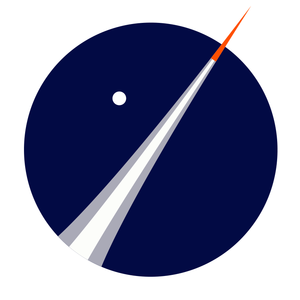Aldinean Space Agency: Difference between revisions
No edit summary |
m (Sjealand moved page Nordanian Space Agency to Aldinean Space Agency) |
(No difference)
| |
Revision as of 13:18, 15 November 2019
This article is incomplete because it is pending further input from participants, or it is a work-in-progress by one author. Please comment on this article's talk page to share your input, comments and questions. Note: To contribute to this article, you may need to seek help from the author(s) of this page. |
 | |
| Motto | Sapere Aude |
|---|---|
| Formation | 1951 |
| Headquarters | Lydnhel, Aurega |
Official language | Auregan, Tynic, Aininian |
Administrator | |
| Mantovani Spaceport, Assoras | |
Parent organisation | |
Budget | |
Staff | 16,842 |
The Aldinean Space Agency (ARA) is an intergovernmental organisation dedicated to the exploration of space, aeronautics and aerospace research, with 15 member states. Established in 1951 and headquartered in Lydnhel, Aurega, NSA has a worldwide staff of 16,842 and an annual budget of $24.00 billion (2018). The Aldinean Space Agency is a subset of the Aldinean League and was created through bilateral negotiations between the member states of that organisation. It began firstly as a joint effort of the Auregan and Sjealandic space program, with other nations in Aldinea soon joining as the program was extended to the Aldinean League as a whole.
The Aldinean Space Agency is one of the most succesful programs in Esquarium, operating one, a vast network of satellites and with yearly ferries to orbit.
Spaceflight programs
Programs
Níðhöggr Program (1951-1978)
The Níðhöggr began as a unification of the infant projects of the Sjealandic and Auregan air forces suborbital sounding rocket program, seeking to develop propulsion technology and further study transonic and supersonic aerodynamics. The rockets were roughly 8m long and provided significant advancements in the study of these areas, as well as providing useful data for the study of cosmic rays, atmospherical studies and on the logistics of rocket launches. Starting largely as an amalgamation of the technology developed by the two nations, later reinforced by more countries participating, the project was off to a slow, but steady start with good progress. The first rockets were unguided had two solid fuel stages, with a payload of 71kg. Níðhöggr 1 could reach an apogee of 82km, while Níðhöggr 782, the last to be launched, had a payload of 240kg and an apogee of 458km.
In the early stages of the project, failure rates for launches were as high as 25%, though as the organization gained experience, it reduced to 9% by the end of the program.
Oberon program (1983–2001)
Gungnir Program (1971-1978)
Lugh Program (1989-)
Member states, funding and budget
The NSA has a mandatory budget of 0.01% of a member country's GDP. This is to fund maintenance of the agency's various research centers, launch sites and offices, as well as common usage programs such as satellite maintenance. Participation in additional programs requires additional funding, to sustain the operation of optional programs.